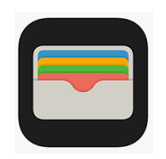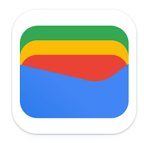Nozioni base per…
Disporre di un portafoglio digitale (PayPal, Apple Pay, Google Wallet)
Per utilizzare un portafoglio digitale, dovrai prima creare un account con il fornitore di servizio abilitato e aggiungere i tuoi metodi di pagamento, come carte di credito o debito. Una volta configurato il tuo account e aggiunti i metodi di pagamento, puoi utilizzare il portafoglio digitale per effettuare pagamenti.
Per effettuare un pagamento utilizzando il portafoglio digitale, devi aprire l’app del portafoglio sul tuo dispositivo mobile e selezionare il metodo di pagamento preferito. Successivamente, potrai scansionare un codice QR o avvicinare il tuo dispositivo a un lettore abilitato per completare il pagamento.
Puoi utilizzare il tuo portafoglio digitale per effettuare acquisti online. Per farlo, dovrai selezionare l’opzione di pagamento con il portafoglio digitale quando richiesto durante il processo di pagamento sul sito web., seguendo quindi le istruzioni per completare il pagamento.
PayPal
Sito web: https://www.paypal.com/uk/home
Applicazione:

- Attiva la fotocamera del tuo dispositivo
- Inquadra e scansiona il codice QR (L’immagine a sinistra è un esempio di codice QR . Una volta scansionato puoi accedere automaticamente al sito web. In questo caso ti sarà chiesto se desideria scaricare l’applicazione PayPal.)
- Installa e utilizza l’applicazione
Apple Pay/Apple wallet

- Apple wallet è già installata sul tuo iPhone, ti basterà trovarla tra le icone disponibili.
- Seleziona Aggiungi una carta e segue le istruzioni.
Google Pay Wallet

- Scarica l’applicazione Google Wallet.
- Apri Google Wallet.
- Se accede per la prima volta, ti sarà chiesto di aggiungere una carta. Puoi inserire i dettagli manualmente o scegliere tra le icone disponibili.
Utilizzare una carta di credito/debito
Per utilizzare una carta di credito online, dovrai già disporre di un conto aperto presso una banca o un istituto finanziario. Dovrai avere a disposizione i dettagli della carta di credito, come il numero identificativo, la data di scadenza e il codice di sicurezza, sia fisicamente che salvati in un portafoglio digitale
Una volta ottenuti questi dettagli, potrai utilizzare la tua carta di credito per effettuare acquisti online:
- Visita il sito web del negozio online o del commerciante dove desideri effettuare l’acquisto.
- Seleziona gli articoli che desideri acquistare e aggiungili al carrello.
- Inserisci le informazioni per la spedizione e la fatturazione.
- Seleziona l’opzione di pagamento tramite carta di credito.
- Inserisci i dettagli della tua carta di credito, come il numero identificativo, la data di scadenza e il codice di sicurezza, così come eventuali altre informazioni richieste.
- Rivedi e conferma i dettagli e autorizza il pagamento.
Una volta autorizzato il pagamento, la transazione verrà elaborata e addebitata sulla tua carta di credito. Riceverai una conferma del pagamento e gli articoli che hai acquistato ti saranno spediti.
Avvalersi dei servizi bancari online
Per inviare un bonifico bancario o effettuare altri pagamenti avvalendoti dei servizi bancari online, dovrai già disporre di un conto presso una banca o un istituto finanziario. Avrai bisogno anche dei dettagli del conto bancario del destinatario, come il numero di conto e il codice IBAN, nonché dell’importo esatto che desideri trasferire.
Accertato di disporre e di un conto bancario e di relativi servizi online associati, potrai seguire i seguenti passaggi:
- Accedi al sito web o all’applicazione della tua banca.
- Effettua l’accesso al tuo profilo personale.
- Seleziona l’opzione che ti consente di inviare denaro (bonifico, pagamenti etc.)
- Inserisci i dettagli del conto bancario del beneficiario, come il numero di conto e il codice ABI/ CAB, oltre all’importo che desideri trasferire.
- Verifica e conferma i dettagli del pagamento e autorizza il bonifico.
- Prima di completare la transazione, potrebbe esserti richiesto di autorizzare il pagamento inserendo un PIN o, molto probabilmente, utilizzando la tua impronta digitale o il riconoscimento facciale.
Dopo aver inviato il bonifico, la transazione verrà elaborata e l’importo autorizzato sarà trasferito dal tuo conto bancario a quello del beneficiario. Riceverai una conferma di pagamento dalla tua banca.
